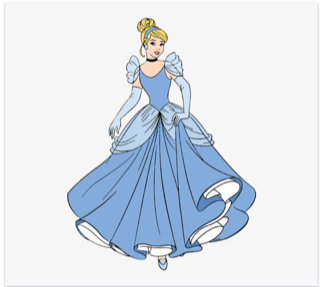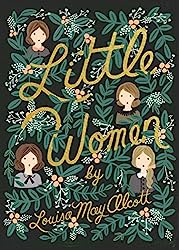
A fost odată ca niciodată, într-o lume fermecată, o tânără frumoasă numită Cenușăreasa. Locuia într-o casă modestă, alături de mama ei vitregă și cele două surori vitrege. Acestea din urmă erau îngâmfate și egoiste, iar pe nefericita Cenușăreasa o tratau ca pe o slujnică.
Într-o zi, în regatul lor se vesti că prințul urma să organizeze un bal grandios, la care toate fetele din împrejurimi erau invitate. Surorile vitrege erau în culmea extazului și-și pregătiră cele mai elegante rochii și bijuterii pentru această ocazie specială.
În timp ce ele se pregăteau pentru bal, Cenușăreasa era nevoită să îndeplinească toate sarcinile casnice și i se refuza timpul necesar de a se pregăti pentru a participa la acest eveniment magic. Cu tristețe în suflet, ea a acceptat faptul că nu se va putea bucura de această încântătoare ocazie. Însă, într-o clipă neașteptată, o zână bună i se arătă în față.
“Nu mai plânge, Cenușăreaso,” spuse zâna cu zâmbetul ei blând. “Voi face să se împlinească dorința ta de a merge la bal.”
Cu o adiere fermecată a baghetei magice, zâna transformă un simplu dovleac într-o splendidă caleașcă și patru șobolani în patru cai eleganți. Apoi, cu o mișcare grațioasă, transformă rochia veche și ponosită a Cenușăresei într-o rochie de bal minunată, albastră și strălucitoare.
“Dar să fii atentă,” o avertiză zâna, “vraja va dispărea la miezul nopții.”
Cenușăreasa, coplesită de emoție și recunoștință, plecă spre bal în caleașca fermecată. Când ajunse acolo, toți cei prezenți rămaseră* uimiți de frumusețea ei. Prințul însuși, captivat de farmecul ei, o luă de mână și începură să danseze împreună într-o armonie desăvârșită. Cenușăreasa se simțea nespus de fericită.
Cu toate acestea, într-o clipă de neatenție, își dădu seama că miezul nopții se apropia, iar ea trebuia să plece. În graba ei, Cenușăreasa își pierdu pantoful de cristal pe scările castelului.
A doua zi, prințul, hotărât să o găsească pe frumoasa necunoscută, începu căutările in tot regatul. El își trimise slujotorii în toate colțurile pentru a testa pantoful de cristal. Surorile vitrege se străduiră să-l încalțe, dar se văzu că pantoful nu le venea deloc.
Când a venit rândul Cenușăresei să încerce pantoful, acesta i se potrivi perfect. Prințul realiză că ea era fata misterioasă căutată și îi ceru să devină soția sa. Cenușăreasa acceptă cu bucurie și emoție.
Astfel, Cenușăreasa părăsi casa mamei vitrege și începu o nouă viață alături de prințul său. Trăiră fericiți până la adânci bătrâneți și se iubiră cu pasiune și devotament.
Povestea Cenușăresei rămase în memoria oamenilor drept un simbol al curajului și speranței. Ne reamintește că, indiferent de provocările vieții, iubirea și bunătatea pot învinge mereu răutatea și nedreptatea.
*Perfect Simplu
eu rămăsei
tu rămăseși
el/ea rămase
noi rămaserăm
voi rămaserăți
ei/ele rămaseră
In English:
Once upon a time, in an enchanted world, there was a beautiful young woman named Cinderella. She lived in a modest house with her stepmother and two stepsisters. The latter were conceited and selfish, and treated the unfortunate Cinderella as a servant.
One day, word spread in their kingdom that the prince was going to organize a grand ball, to which all the girls in the area were invited. The stepsisters were in the height of ecstasy and prepared their most elegant dresses and jewels for this special occasion.
While they were preparing for the ball, Cinderella was forced to perform all the household duties and was denied the time needed to prepare to attend this magical event. With sadness in her heart, she accepted the fact that she would not be able to enjoy this delightful occasion. But, in an unexpected moment, a good fairy appeared in front of him.
“Stop crying, Cinderella,” said the fairy with her gentle smile. “I will make your wish to go to the ball come true.”
With an enchanted wave of her magic wand, the fairy transforms a simple pumpkin into a splendid carriage and four rats into four elegant horses. Then, with one graceful movement, she transforms Cinderella’s shabby old dress into a wonderful, sparkling blue ball gown.
“But be careful,” the fairy warned her, “the spell will wear off at midnight.”
Cinderella, overwhelmed with emotion and gratitude, leaves for the ball in the enchanted carriage. When she got there, everyone present was amazed by her beauty. The prince himself, captivated by her charm, took her by the hand and began to dance together in perfect harmony. Cinderella felt overjoyed.
However, in a moment of inattention, she realized that midnight was approaching, and she had to go. In her haste, Cinderella lost her crystal slipper on the castle stairs.
The next day, the prince, determined to find the beautiful unknown, began searching throughout the kingdom. He sent his servants to all corners to test the crystal shoe. The stepsisters tried to put him on, but it was obvious that the shoe did not fit them at all.
When it was Cinderella’s turn to try on the shoe, it fit her perfectly. The prince realized that she was the mysterious girl he was looking for and asked her to become his wife. Cinderella accepts with joy and excitement.
Thus, Cinderella left her stepmother’s house and started a new life with her prince. They lived happily ever after and loved each other passionately and devotedly.
The story of Cinderella remained in people’s memory as a symbol of courage and hope. It reminds us that no matter what life’s challenges are, love and kindness can always overcome evil and injustice.


